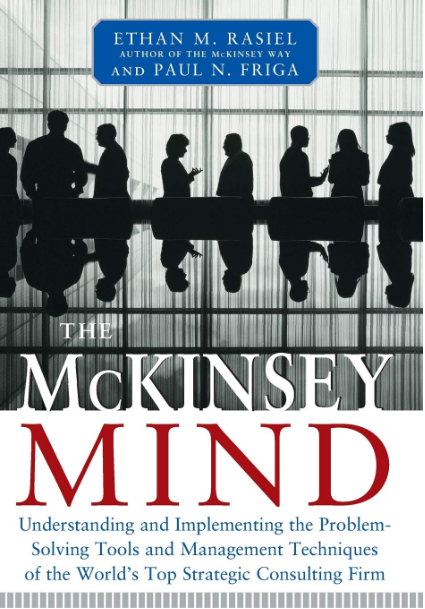What is McKinsey’s secret and what does this consulting firm actually do?
McKinsey is a hired to help clients solve an issue. Firstly they will frame a problem then use fact analysis to think the best way to overcome this.
Fact based analysis is expensive and time consuming hence need to think about the core of the problem, the big picture and focus on this.
The aim is to synthesise the complex situation to take it to the client for meaningful action points. So put thoughts and ideas down on paper. Don’t spend time becoming precisely wrong – instead aim for mostly right.
Initially think about a hypothesis as a base for your work, then take actions to disprove or prove the hypothesis. Construct a coherent story based on the data – be willing to develop a new hypothesis if data disproves the first one. Be sure to keep focused on the actual issue.
The 80:20 rule is thought of as key when assessing data and will help you prioritise. It is extremely important to think what will I achieve by doing this particular thing so that you can focus on meaningful activities. Remember list data with sources – this will help you in future as well.
Focus on the top line issues, you ask three questions to each top line issue. The sub questions will then need answered with likely further three questions and so on. When producing an analysis road map if it reveals that by answering a question an unviable route has been discovered stop going down this route and spend time on an alternative path.
An issue Tree can be constructed in which branches are issues and smaller branches are sub issues. Each branch represents a potential avenue to explore. When you explore these try to cut off complete branches to focus on the most relevant things. The key is to quickly eliminate lots of irrelevant options.
Brainstorming occurs and people should be well prepared prior to this session. Be willing for your ideas to be shot down and open to all ideas. “Kill your own baby” if need.
Interviews gain some rapport explain purpose of the interview, then move in with the more challenging questions and listen. Afterwards send thank you letters to participants – this will also help build your network in future.
McKinsey associates, wherever they work across the world, will respond within twenty four hours when colleagues send them requests for assistance, whatever position they work in. Knowledge management is very important across the organisation and this rapid response from a relevant expert aims to assist.
Presentations are often started with the proposed answer and then the facts are laid out. A good presentation follow the solution with the initial hypothesis and outlines what work that has been performed. The presentation contains only pertinent information – not all the facts.
McKinsey employees are sure to involve clients with discussions and try to provide the proposed solution prior to a final presentation. This allows the hiring team to potentially agree and challenge any assumptions prior to the final delivery.
In terms of work, life balance suggests quite a few McKinsey employees leave as it is very difficult to balance a family and a life.
So in summary attempt to solve at the first meeting with a hypothesis. Work by utilising intuition and data. Do your research but don’t reinvent the wheel use cooperate knowledge and stick to the task. The end product will be you telling the story behind the data.
Don’t boil the ocean!



